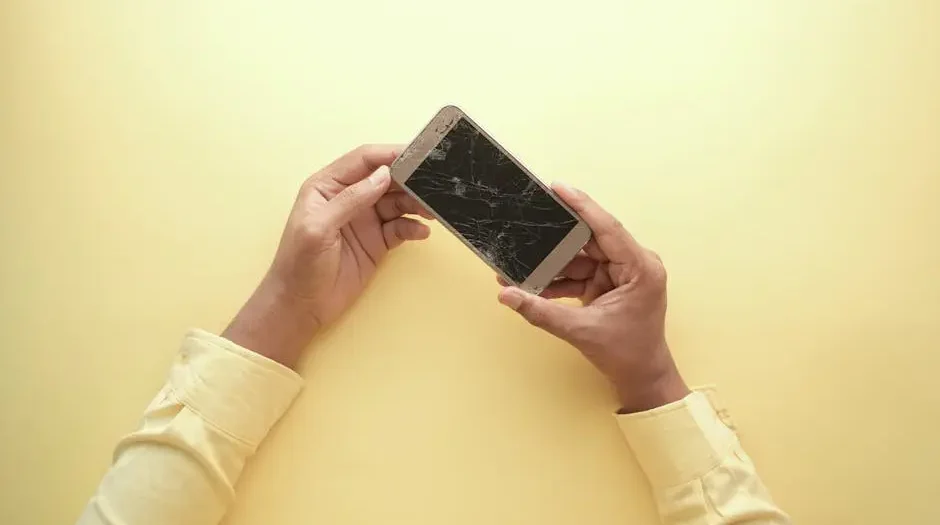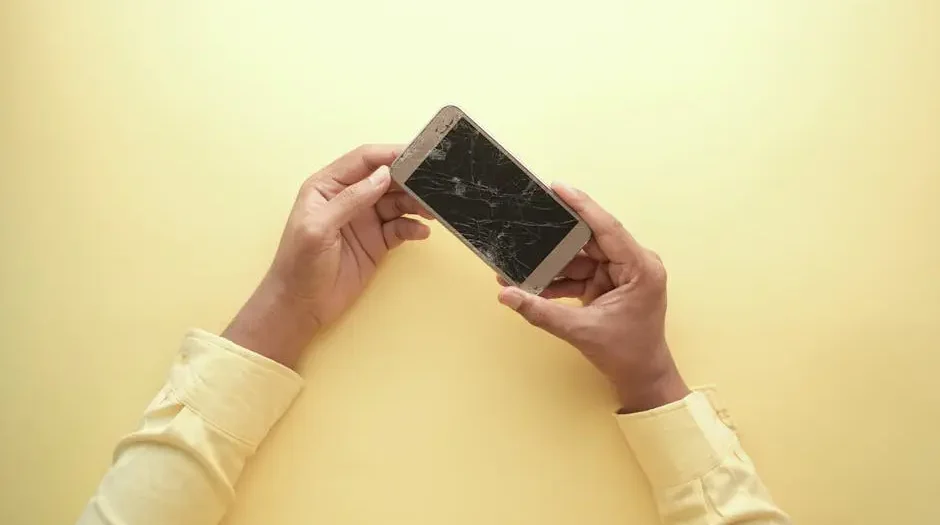In our tech-driven world, devices play a crucial role in our daily lives. However, they’ll inevitably show signs of wear and tear. One of the most common issues device users face is a cracked or damaged screen. Fortunately, screen repair can be a game changer—not only restoring the functionality of your device but also extending its overall lifespan. In this blog, we’ll explore the importance of screen repair, the benefits it offers, and how to effectively go about it.
Understanding the Importance of Screen Repair
Screen repair is not just a minor fix; it plays a pivotal role in the overall health of your device. When you experience a cracked or shattered screen, it can feel like your entire device is rendered useless, but that’s not the case. Addressing screen issues promptly can prevent further damage and restore usability. By engaging in timely repairs, you maintain both the functionality and aesthetic of your device. Many users underestimate this aspect, thinking of repairs as mere aesthetic fixes rather than integral health steps for their gadgets.
Moreover, a well-maintained screen enhances user experience significantly. Imagine trying to navigate your smartphone with a cracked display; it’s frustrating and can impede your daily tasks. A repair not only restores your device’s functionality but also allows you to enjoy the clarity and responsiveness of a brand new screen. This can make a world of difference in how you interact with your technology every day.
Also, let’s not forget the environmental implications of screen repair. Every time a device is replaced instead of repaired, it adds to electronic waste, a growing global concern. Screen repair is a sustainable choice, reducing waste and promoting a more eco-friendly approach to gadget management. By repairing instead of replacing, you contribute to a healthier planet while saving yourself money in the long run.
Common Screen Issues That Require Repair
Screen issues come in various forms, each demanding attention to ensure your device functions properly. The most prevalent problem is, of course, cracking. Whether it’s due to an accidental drop or a sharp object coming into contact with the screen, cracks can obstruct visibility and usability. It’s essential to address cracks early on since they can worsen over time, leading to more extensive damage that could compromise the entire device.
Another common issue is screen discoloration. Users often notice that their screens do not display colors accurately or have patches of distortion. This degradation not only affects the aesthetic appeal of your device but can also impact how you interact with apps, images, and videos. Addressing this issue through repair will bring back the original vibrancy of your device’s screen.
Additionally, touch sensitivity problems can arise, leaving users frustrated as they try to navigate their devices. In some cases, the screen may fail to respond to taps or swipes, leading to a dreadful user experience. It is important to recognize that these problems are not just nuisances; they can significantly hinder your daily activities and should be prioritized for repair as soon as they’re recognized.
How Screen Repair Enhances Device Longevity
Repairing a device’s screen can significantly enhance its longevity and overall performance. When you invest in screen repair, you are essentially resolving one of the major points of failure that can lead to device obsolescence. A functioning screen makes it easier to receive software updates, access important applications, and ensure that internal components stay protected. As a result, your device can serve you well into the future, rather than being relegated to the recycling bin after a minor mishap.
Furthermore, regularly maintaining your device by repairing screens and addressing any damage can keep your device’s resale value higher. Many buyers look for devices that have been well cared for and maintained. A screen repair can be a strong selling point, particularly if you’re trying to upgrade to a newer model. By prolonging the life of your device, you not only maximize your investment but also cultivate a habit of protecting your gadgets.
Moreover, the psychological benefits of maintaining devices are often overlooked. A device that functions well without issues enhances your productivity and overall satisfaction. You’re more likely to keep updating and using a device that works seamlessly for years, ensuring you don’t face the frustrations of having to constantly buy new products.
The Cost-Effectiveness of Repairing vs. Replacing
When it comes to deciding between repairing and replacing a device, screen repair often emerges as the more affordable option. The cost of a screen repair is generally a fraction of purchasing a brand new device. Many people find themselves in a dilemma when faced with a cracked screen and may consider investing in a new device altogether. However, taking the repair route typically results in significant savings while allowing users to continue utilizing their existing device.
In addition to initial costs, it’s important to consider the long-term financial impact. Devices often come equipped with subscriptions for software or other services. By opting for screen repair, you retain access to these prepaid services without the need to reacquire them for a new device, which can add to the overall expenses significantly.
Beyond direct costs, choosing repairs also leads to savings in emotional and time investments. Transitioning to a new device can involve learning curves, transferring data, and possibly facing compatibility issues with existing peripherals. Repairs allow for continuity in usage while avoiding unnecessary hiccups that come with introducing a new gadget into your life.
Finding the Right Professionals for Your Screen Repair
Finding a reputable professional for screen repair can greatly influence the outcome of your service experience. Start by seeking out reviews and recommendations from trusted sources. Personal experiences shared by friends or family members can give you valuable insights into reliable service providers. Additionally, online platforms, such as Google or Yelp, offer ratings and reviews that can inform your choices.
It’s also wise to ensure that the technicians are certified and experienced in handling your specific device type. Many repair shops advertise their qualifications, so you can inquire about their expertise with particular brands or models. Furthermore, consider asking about the types of parts they use—original equipment manufacturer (OEM) parts often guarantee better levels of quality over generic replacements.
Lastly, compare quotes from different professionals to find a balance between cost and quality. While it may be tempting to choose the cheapest option, keep in mind that quality repairs might save you money in the long run. A reputable technician should be transparent about their pricing structure and the services included, ensuring that you don’t face hidden charges. Choosing the right professionals makes all the difference in the longevity and performance of your repaired screen.
DIY Screen Repair: What You Need to Know
For the more adventurous and tech-savvy individuals, do-it-yourself (DIY) screen repair can be a tempting option. However, before diving into this, it’s essential to weigh the pros and cons. On one hand, DIY repairs can save you a considerable amount of money, making it an attractive option. The internet is filled with guides and videos that simplify the repair process, making it feasible for many to tackle screens on their own.
That said, DIY repairs come with their own sets of risks. The most significant concern is potentially voiding your warranty. Many manufacturers stipulate that any unauthorized repairs can lead to a loss of warranty coverage. Moreover, without proper tools or experience, you risk causing further damage that could result in a more expensive repair down the line. It’s crucial to assess your skills and the risks associated before attempting any DIY repair.
If you do decide to go the DIY route, invest in high-quality tools and opt for reputable parts. Often, the quality of replacement screens can vary widely, and choosing subpar parts may lead to a lesser experience post-repair. Lastly, take your time; rushing through the process can lead to errors that could otherwise be avoided. DIY repairs may not be for everyone, but for those willing to take the plunge, they can be rewarding and cost-effective.
Preventing Future Screen Damage
Once you’ve repaired your screen, it’s vital to implement strategies for preventing future damage. Simple measures can go a long way in protecting your device. One of the most effective ways is to invest in high-quality protective gear, such as tempered glass screen protectors and sturdy cases. These accessories can absorb shocks and reduce the risk of cracks from falls, keeping your screen safe.
Additionally, being mindful of your device’s environment can prevent unwanted accidents. Designate safe places for your device, whether it’s on a desk or in a bag. Keep it away from edges or areas where it could easily fall. Furthermore, handling your device with care can prevent mishaps; avoiding situations where it could slip from your grip is an easy way to mitigate risk.
Lastly, consider performing regular maintenance checks on your device. By routinely checking for minor issues—like loose edges or signs of pressure on the screen—you can take action before they escalate into major problems. A little diligence can help keep your device looking and functioning like new for years to come.
Wrap-Up: Investing in Repairing Your Device
By opting for screen repair rather than replacement, you’re making a wise choice for both your wallet and the environment. A simple repair can give your device a new lease on life, keeping it functional and within reach for much longer. Remember, taking care of your gadgets today means enjoying them for years to come.








Write a comment
Your email address will not be published. All fields are required